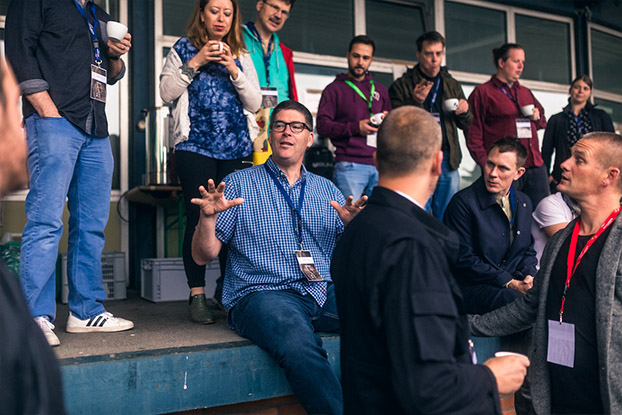Innovation and creativity are the buzzwords of business today. Leaders at major corporations are as concerned about preserving its creative spark as any growing startup is. And it’s little wonder. Many of today’s most admired and successful companies maintain their competitive advantage through constant innovation rather than a focus on the core.
It’s easy to take a look at companies like Google and Facebook and assume open layouts, designed to encourage chance collisions inside the organization, are part of their secret innovation sauce.
But, as it turns out, it’s not so much the chance collision that matters, it’s who you’re colliding with.
Acquaintances matter more than friends
Research by Goizueta professor Jill Perry-Smith shows that [highlight]there’s more to unleashing creativity in the workplace than simply making it easier for colleagues to talk[/highlight]. Specifically, environments and cultures that encourage more interaction between casual acquaintances are more likely to see innovative thinking than those that don’t.
“The basic idea is that when we interact with people outside our core social set, we’re more likely to be interacting with people who think differently than we do,” she said, which tends to stimulate thinking in new ways. People with strong bonds — close friends, family, colleagues — have a tendency to think similarly, so it’s less likely that conversations in these groups will yield a spark of creativity.
[pullquote]People with strong bonds — close friends, family, colleagues — have a tendency to think similarly, so it’s less likely that conversations in these groups will yield a spark of creativity.[/pullquote]
Of course, that doesn’t mean they can’t. The thing is, we’re a lot less likely to pay attention to their outside-the-box advice or ideas.
“If the people we know really well give us really distinct advice, that potentially could help us be creative, but my research suggests we actually aren’t really going to pay close attention to that,” Perry-Smith said.
In fact, we have a tendency to pay much more attention to thoughts from people we don’t know well — even when they’re providing the exact same advice.
“If we’re interacting with these people we don’t know well and they’re giving us different information, we’re really going to think about it, and that’s going to push us to be more creative,” Perry-Smith added.
Thoughts for leaders
Certainly environment can make a difference, but Perry-Smith’s research indicates it takes a little more to get the right people talking than simply tearing down the walls. In fact, if handled correctly, some intentional encounters can be just what the doctor ordered.
“One idea is to create opportunities for employees to get out of their own department and spend time in other departments to expose them to different people in the organization,” she said. She likens it to a mini-sabbatical, and it could be as simple as attending a meeting outside your home department. The goal isn’t immersion, just a chance to form some new acquaintances in the building.
Executives can lead by example, too, and push themselves to casually get to know people outside of their core team. The executive also benefits from such efforts.
“That would help stimulate the creativity of the leader as well,” Perry-Smith said.











